哪款 iPhone? 2023 年最值得购买的 iPhone
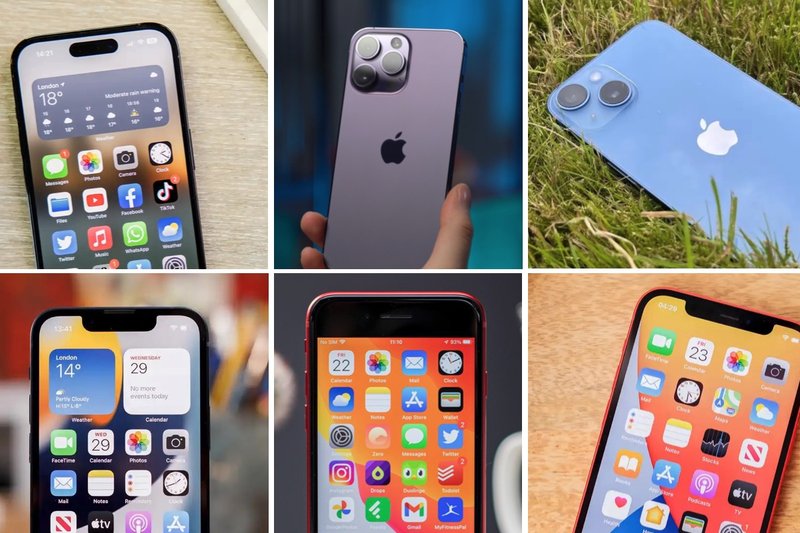
Deciding which iPhone to buy has always been tricky. Which screen size is best for you, and how much storage do you need? Should you save money by selecting an older model, or should you splash out on the latest iPhone? Which iPhone is the best compromise between specs and value for money?
In this article we talk you through each of the phones currently available from Apple, to help you decide which is best for you. We discuss iPhone prices, specs and features, paying particular attention to the cameras, screens and durability, so you should leave feeling much more confident about which iPhone you should get.
For more help with your choice see our reviews of the latest iPhones and our Best iPhone chart.
What iPhones does Apple sell?
Apple introduced four new phones in September 2022, bringing the number of new phones launched in 2022 to five. But there are actually eight iPhones in Apple’s line up right now. If you are looking to upgrade an old iPhone or move to iPhone from another manufacturer, here’s the low down on what Apple sells.
We’ll start of by looking at how the design of each handset differs, so you can tell which iPhone is which at a glance, before going on to discuss how the iPhones compare in other ways including screens, cameras, safety features, specs and battery life.
Before we start, a quick-at-a-glance comparison of the iPhones:
iPhone 14 – This is the handset for those who don’t need all the bells and whistles of the Pro handsets, but want new camera features like the Photonic Engine and better low light photos and the Action mode, which aren’t available on the iPhone 13. Starting at $799/£849.
Apple iPhone 14
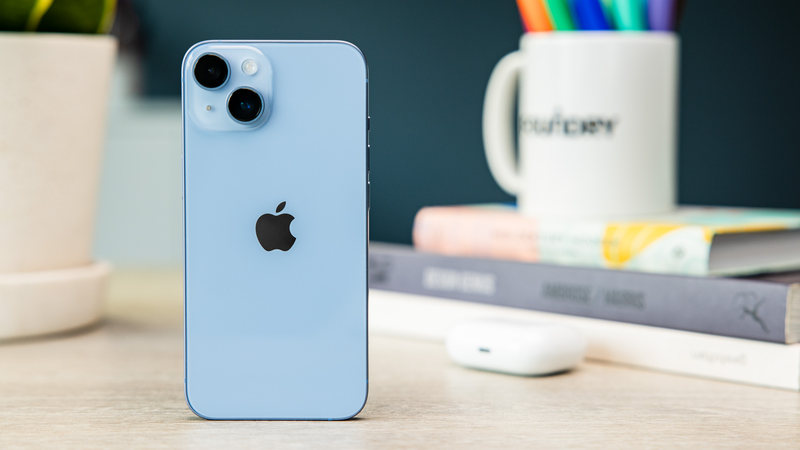
Best Prices Today:
$799.00 at Apple | $799.99 at Best Buy
iPhone 14 Plus – This iPhone is identical to the iPhone 14 except for one big difference: it’s bigger. If you prefer a larger iPhone but you don’t need all the features of the Pro Max, or would rather save your money, this is the iPhone for you. Starting at $899/£949.
Apple iPhone 14 Plus

Best Prices Today:
$899.00 at Apple | $899.99 at Best Buy
iPhone 14 Pro – If you want the best features on an iPhone right now, but you’d prefer an average sized handset this is the one for you. Starting at $999/£1,099.
Apple iPhone 14 Pro
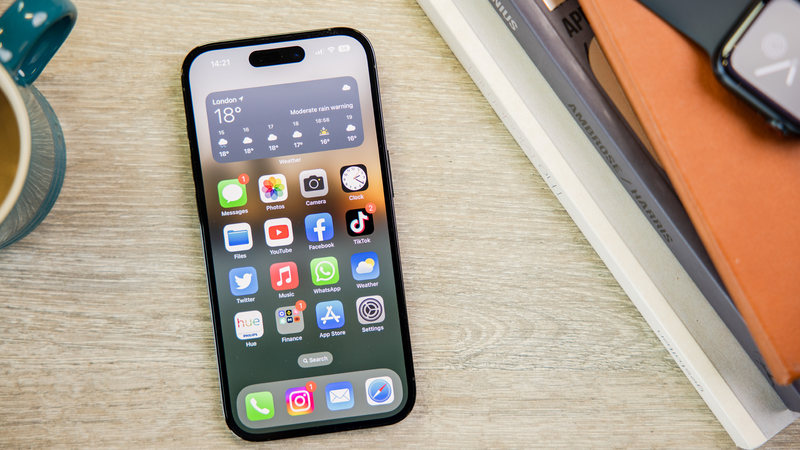
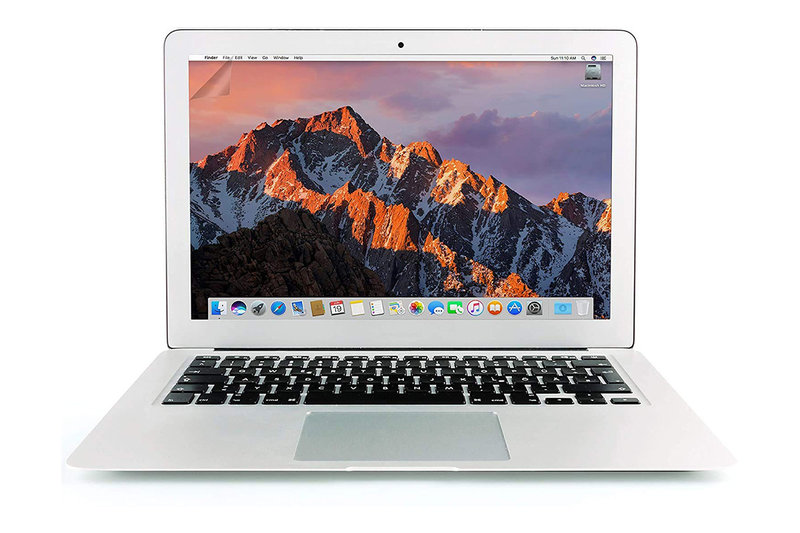
Best Prices Today:
$999.99 at Best Buy
iPhone 14 Pro Max – If you want the best features on an iPhone right now in a large handset this is the one for you. Starting at $1,099/£1,199.
Apple iPhone 14 Pro Max

Best Prices Today:
$1099.99 at Best Buy
iPhone 13 – There’s not a huge difference between the iPhone 14 and iPhone 13. They both feature the A15 Bionic, but there’s an extra GPU core in the 14, which might matter if you are a keen gamer. If that, and the missing camera features, don’t matter to you then you could certainly save your money and get the 2021 iPhone. Starting at $699/£749.
Apple iPhone 13
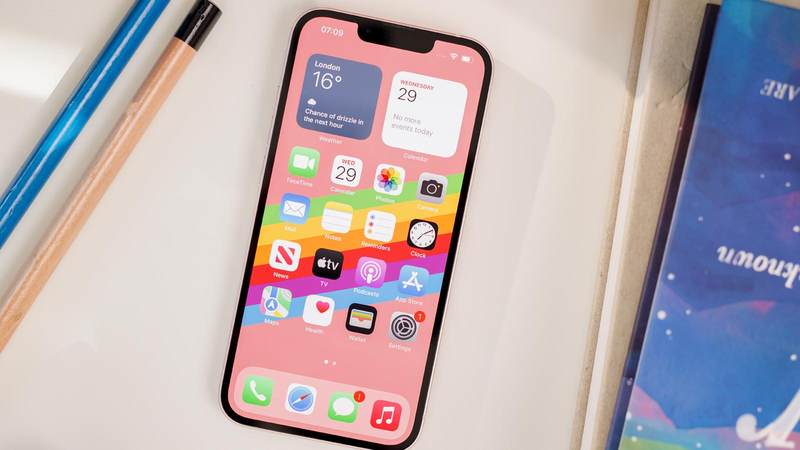
Best Prices Today:
$829.00 at Amazon | $829.00 at Apple
iPhone 13 mini – This is the only small iPhone you can buy – Apple has decided not to introduce an iPhone 14 mini. If you want a small iPhone with FaceID this is your only option right now. Starting at $599/£649.
Apple iPhone 13 mini
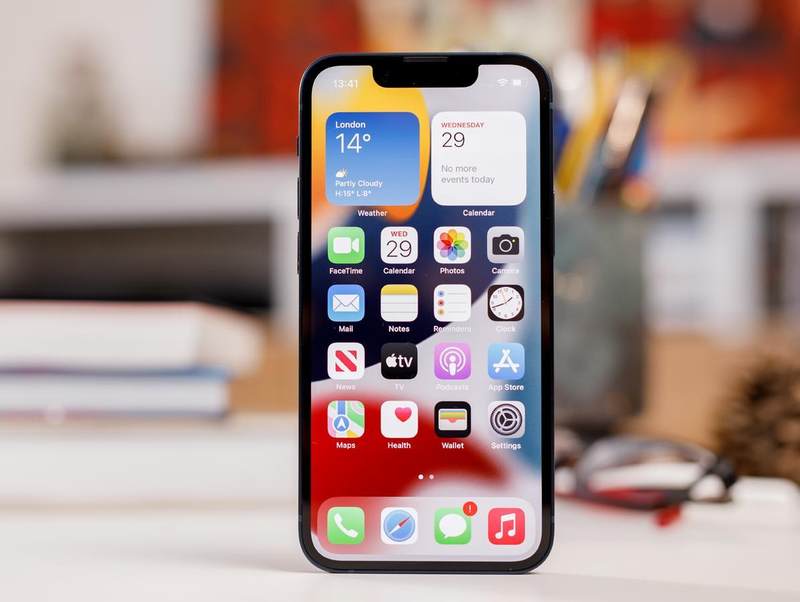
Best Prices Today:
$719.99 at Amazon
iPhone SE (3rd gen) – Apple introduce the iPhone SE 3rd generation earlier in 2022. It’s the cheapest iPhone you can buy and it has a Home button. This is the best iPhone for those people that want or need a Home button – perhaps the lack of a button could cause accessibility problems (although there is a way to add a software Home button if you need to). Starting at $429/£449.
iPhone SE (2022)
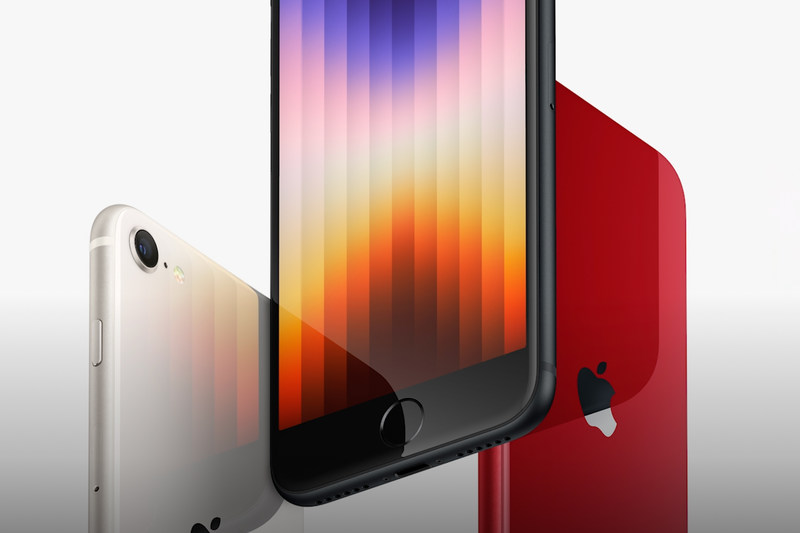
iPhone 12 – The iPhone 12 has been around for a while now, it was the iPhone Apple launched in 2020. While it lacks the headline features of the past couple of years, it offers many of the most popular features like Night mode, and if you want an iPhone with FaceID then this is your cheapest option. Starting at $599/£649.
Apple iPhone 12
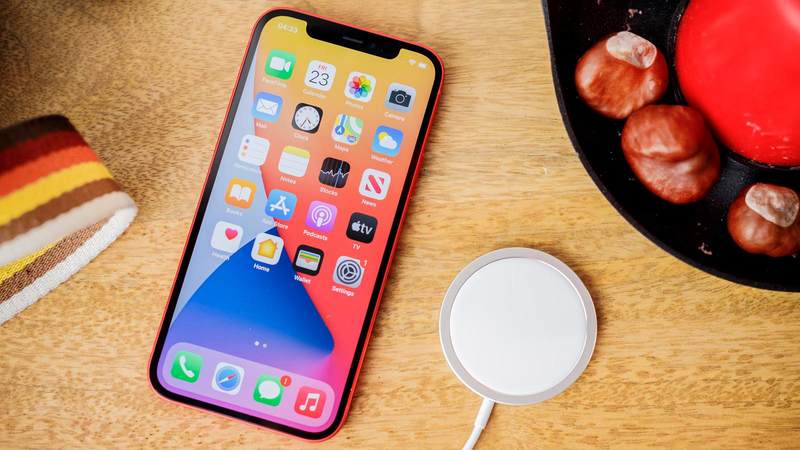
Best Prices Today:
$629.00 at Apple | $629.99 at Best Buy
Here’s an overview of Apple’s current iPhone range:
| Model | Release date | Storage options | Prices | View on Apple’s website |
| iPhone 14 Pro Max | September 2022 | 128GB 256GB 512GB 1TB |
$1,099/£1,199 $1,199/£1,309 $1,399/£1,529 $1,599/£1,749 |
Apple Store |
| iPhone 14 Pro | September 2022 | 128GB 256GB 512GB 1TB |
$999/£1,099 $1,099/£1,209 $1,299/£1,429 $1,499/£1,649 |
Apple Store |
| iPhone 14 | September 2022 | 128GB 256GB 512GB |
$799/£849 $899/£959 $1,099/£1,179 |
Apple Store |
| iPhone 14 Plus | September 2022 | 128GB 256GB 512GB |
$899/£949 $999/£1,059 $1,199/£1,279 |
Apple Store |
| iPhone 13 | September 2021 | 128GB 256GB 512GB |
$699/£749 $799/£859 $999/£1,079 |
Apple Store |
| iPhone 13 mini | September 2021 | 128GB 256GB 512GB |
$599/£649 $699/£759 $899/£979 |
Apple Store |
| iPhone 12 | October 2020 | 64GB 128GB 256GB |
$599/£649 $649/£699 $749/£809 |
Apple Store |
| iPhone SE (3rd gen) | March 2022 | 64GB 128GB 256GB |
$429/£449 $479/£499 $579/£609 |
Apple Store |
In the U.S. prices for the iPhone 14 series are the same as the iPhone 13 was in 2021. Unfortunately if you are outside the U.S. prices have risen for the 2022 models (including the iPhone SE 3), although at least prices for the older iPhones have all dropped. Read our iPhone deals roundup for more advice on getting the lowest possible price.
Also see our comparison of iPhone 14 vs. iPhone 14 Pro.
Design: How do the iPhones compare?
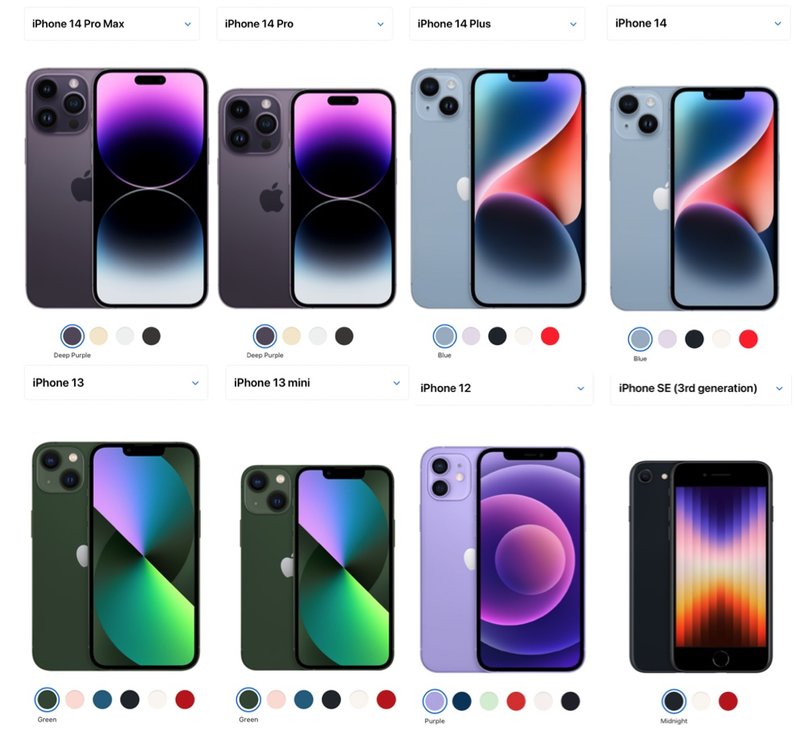
There are eight different iPhone models on sale as of fall 2022
Apple
There are a couple of headline features for the iPhone 14 Pro and Max, but one of the most notable is the reimagining of the notch. Rather than a notch we now have a black cutout that conceals the TrueDepth camera and other Face ID tech. This is more than a black blob though, Apple’s calling it Dynamic Island and it can grow. This repurposing of the notch turns the black area at the top of the iPhone into something like the menu bar of a Mac. The Dynamic Island grows to incorporate elements such as low battery alerts, unlocking, Silent mode, privacy indicators and more.
Thanks to this new ‘notch’ (apparently 30% smaller than the old one) it’s easy to recognise the iPhone 14 Pro and Max as they are the only iPhones that offer this features. If you wait a year though rumour has it that the feature will come to all of 2023’s iPhones.
The iPhone 14, on the other hand, looks similar to the iPhone 13, there’s no Dynamic Island here. However, if you are upgrading from an iPhone that’s older than the iPhone 13 then the notch is smaller on both the iPhone 13 and 14. The best way to differentiate between the iPhone 13 and iPhone 14 is the colour options – expect that even the colours aren’t all that different. The iPhone 14 offers blue (pale), purple, Midnight, Starlight and a red (bright). A new yellow color joined the line up in March 2023. The iPhone 13 comes in green, pink, blue (dark), Midnight, Starlight and red (dark).
The only other difference is the cameras protrude slightly further on the back of the iPhone 14, which means that if you lay the iPhones on the table the iPhone 14 will be slightly less flat than the iPhone 13 (as you can see from the dimensions below). The iPhone 14 Pro models also have rear cameras modules that protrude more than the previous generation did.
The iPhone 14 Plus looks like the iPhone 14 but is a bit larger. In fact the dimensions are similar to the iPhone 14 Pro Max, but you can tell those two phones apart because the 14 Plus has the notch. The iPhone 14 Plus could feasibly be mistaken for an iPhone 13 Pro Max, but for the fact that the Pro and Max models have a more metallic color finish, and Apple no longer sells that model.
The iPhone 13 mini is distinctive because it is the only diminutive iPhone with Face ID that Apple sells. The iPhone SE (now in its 3rd generation) is also small, but it has the telltale Home button.
The other major differences between the iPhone 14 Pro and Max models is that they are constructed from Surgical-grade stainless steel, while the other models sold by Apple are aluminium. All but the iPhone SE (3) offer a Ceramic Shield front, which should hopefully mean that the glass doesn’t smash the first time you drop it.
| iPhone | Dimensions | Weight | Colours |
|---|---|---|---|
| iPhone 14 Pro Max | 6.33 inches (160.7 mm) x 3.05 inches (77.6 mm) x 0.31 inch (7.85 mm) | 8.47 ounces (240 grams) | Deep Purple, Gold, Silver, Space Black |
| iPhone 14 Pro | 5.81 inches (147.5 mm) x 2.81 inches (71.5 mm) x 0.31 inch (7.85 mm) | 7.27 ounces (206 grams) | Deep Purple, Gold, Silver, Space Black |
| iPhone 14 Plus | 6.33 inches (160.8 mm) x 3.07 inches (78.1 mm) x 0.31 inch (7.80 mm) | 7.16 ounces (203 grams) | Blue, Purple, Midnight, Starlight, Red |
| iPhone 14 | 5.78 inches (146.7 mm) x 2.82 inches (71.5 mm) x 0.31 inch (7.80 mm) | 6.07 ounces (172 grams) | Blue, Purple, Midnight, Starlight, Red |
| iPhone 13 | 5.78 inches (146.7 mm) x 2.82 inches (71.5 mm) x 0.30 inch (7.65 mm) | 6.10 ounces (173 grams) | Green, Pink, Blue, Midnight, Starlight, Red |
| iPhone 13 mini | 5.18 inches (131.5 mm) x 2.53 inches (64.2 mm) x 0.30 inch (7.65 mm) | 4.97 ounces (141 grams) | Green, Pink, Blue, Midnight, Starlight, Red |
| iPhone 12 | 5.78 inches (146.7 mm) x 2.82 inches (71.5 mm) x 0.29 inch (7.4 mm) | 5.78 ounces (164 grams) | Purple, Blue, Green, Red, White, Black |
| iPhone SE 3 | 5.45 inches (138.4 mm) x 2.65 inches (67.3 mm) x 0.29 inch (7.3 mm) | 5.09 ounces (144 grams) | Midnight, Starlight and Red |
Screen: How are the iPhone displays different?
The Pro and Pro Max iPhones have the best screens available on an iPhone – in fact there are a few more pixels on the screens of the 2022 Pro and Max compared to the previous generation. Like the iPhone 13 Pro and Pro Max, the iPhone 14 Pro and Pro Max offer ProMotion, which allows for an adaptive refresh rate. Like the 13 Pro the 14 Pro goes as high as 120Hz for really smooth scrolling, but the 14 Pro refresh rate can go as low as 1Hz, which helps with the new features of the iPhone 14 Pro and Pro Max: an Always-On display. The Always-On display is thus only available on the 14 Pro and Max.

The Always-On display on the iPhone 14 Pro and Pro Max means you can see details without unlocking.
IDG
Thanks to the Always-On screen you will always be able to see elements such as the time and date, notifications and Lock Screen widgets without waking the iPhone. The screen dim to minimise onscreen power usage to preserve battery life and it will turn off should you place it face down or walk away while wearing an Apple Watch.
Aside from the ProMotion capabilities, the iPhone 14 Pro and Max also offer 1,000 nits max brightness and 1,200 nits peak brightness (HDR), but boost to 2,000 nits peak brightness for when you are outdoors in the sunshine. The iPhone 14 and 14 Plus only go to 800 nits max brightness or 1,200 nits peak (HDR). Those figures for the iPhone 14 were the same for the iPhone 13. The iPhone 12 and SE (3) are both 625 nits max brightness, 1200 nits peak brightness (HDR). The brighter the iPhone screen the easier it will be to see detail when it’s really sunny.
The screen size may be the most important factor in your decision. If you want the biggest iPhone screen you can get the good news is that Apple no longer requires you to spend all your money on the most expensive iPhone. There is now a larger version of the standard iPhone: the iPhone 14 Plus. The iPhone 14 Plus and iPhone 14 Pro Max both have a screen that measures 6.7-inches diagonally. The extra space means you can fit a few extra lines of text on the screen, or comfortably bump up the text size. The larger screens are also preferable if you watch a lot of media on your iPhone. It’s likely that if you have previously owned a Max or Plus handset you will feel like your iPhone screen is cramped if you upgrade to a smaller display.
On the other hand, for many the larger iPhone sizes are far too large. Small handed people holding the giant iPhones may be afraid that they are going to drop the hefty and expensive device. Apple sells three iPhones with a 6.1-inch screen: the iPhone 14, iPhone 13 and iPhone 12. Even these handsets are considered to large by some though, so there are also two smaller iPhones on offer: the iPhone SE with its 4.7-inch screen, or the iPhone 13 mini with its 5.4-inch screen.
| iPhone | Screen size & pixels | Screen technology | Screen features |
|---|---|---|---|
| iPhone 14 Pro Max | 6.7-inch screen, 2796-by-1290-pixel resolution at 460 ppi | 2,000,000:1 contrast ratio (typical), 2000 nits peak brightness (outdoor), 1000 nits max brightness, 1600 peak brightness (HDR) | Super Retina XDR, OLED, ProMotion, Dynamic Island, Always On |
| iPhone 14 Pro | 6.1-inch screen, 2556-by-1179-pixel resolution at 460 ppi | 2,000,000:1 contrast ratio (typical), 2000 nits peak brightness (outdoor), 1000 nits max brightness, 1600 peak brightness (HDR) | Super Retina XDR, OLED, ProMotion, Dynamic Island, Always On |
| iPhone 14 Plus | 6.7-inch screen, 2778-by-1284-pixel resolution at 458 ppi | 2,000,000:1 contrast ratio (typical), 800 nits max brightness, 1200 nits peak brightness (HDR) | Super Retina XDR, OLED |
| iPhone 14 | 6.1-inch screen, 2532-by-1170-pixel resolution at 460 ppi | 2,000,000:1 contrast ratio (typical), 800 nits max brightness, 1200 nits peak brightness (HDR) | Super Retina XDR, OLED |
| iPhone 13 | 6.1-inch screen, 2532-by-1170-pixel resolution at 460 ppi | 2,000,000:1 contrast ratio (typical), 800 nits max brightness, 1200 nits peak brightness (HDR) | Super Retina XDR, OLED |
| iPhone 13 mini | 5.4-inch screen, 2340-by-1080-pixel resolution at 476 ppi | 2,000,000:1 contrast ratio, 800 nits max brightness (typical), 1200 nits peak brightness (HDR) | Super Retina XDR, OLED |
| iPhone 12 | 6.1-inch screen, 2532-by-1170-pixel resolution at 460 ppi | 2,000,000:1 contrast ratio, 625 nits max brightness (typical), 1200 nits peak brightness (HDR) | Super Retina XDR, OLED |
| iPhone SE 3 | 4.7-inch screen, 1334-by-750-pixel resolution at 326 ppi | 1400:1 contrast ratio, 625 nits max brightness (typical) | LCD display with IPS technology |
Camera: How do the iPhone cameras compare?
For many it’s the capabilities of the cameras that sell the iPhones, so it’s no wonder that every year Apple improves the camera on its iPhones, sometimes improving the tech, sometimes the software. For the iPhone 14 series there are some technical improvements with both Pro and non-Pro iPhones getting camera upgrades.
The iPhone 14 and 14 Plus still feature a dual-camera array with 12MP wide and ultra-wide lenses. But for this generation Apple includes a faster aperture (ƒ/1.5 rather than ƒ/1.6) and larger sensor on the main camera, which should lead to better performance and improvements in low-light shooting. Indeed, Apple claims 49 percent better performance in such conditions.
The TrueDepth (FaceTime and Face ID) camera has also been upgraded on the front of the iPhone 14 and 14 Plus. It gains autofocus and improved low-light performance thanks to a wider aperture. If you use your iPhone for photography these are good reasons to choose the iPhone 14 over the 13 or 12.
The iPhone 14 series all benefits from a new Photonic Engine computational system which helps capture more detail when light is limited. This Photonic Engine means all the cameras on the iPhones are able to produce more detail in low-light shots. This new computational system will also aid features such as the new Foreground Blur feature that complements the Portrait Mode. There is also a new Action Mode for video shooting that is designed to improve stabilization. It applies extreme video stabilization so you can capture video while you are moving.
However, those who want the best cameras on an iPhone need to look to the more expensive iPhone 14 Pro and Pro Max. The iPhone 14 Pro and Pro Max gain a 48MP wide-angle camera on the rear. However, most photos you take with the 14 Pro won’t be 48MP at all; they will be 12MP but with more detail because the camera uses image processing to combine four pixels into one. You can take full 48MP shots if you want to, but you need to shoot in ProRAW format.
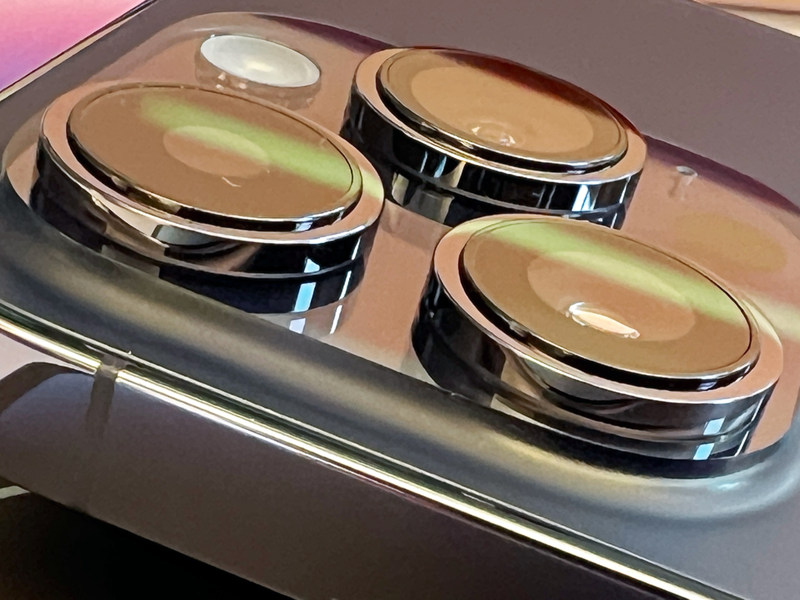
iPhone 14 Pro Max camera
Foundry
Another benefit of being able to shoot in 48MP is that you can zoom and crop and still have enough resolution to get a really good quality image. The main 48MP wide lens camera also gains a 2x optical telephoto mode, while the ultra-wide camera steps down to an f/2.2 aperture, but with a larger sensor with 1.4 micron pixels (up from 1.0 micron). As a result you can expect your low light ultra-wide shots to look much better (Apple says low-light performance is up to 2x better). The front camera also gets a wider f/1.9 aperture (the iPhone 13 Pro’s is f/2.2) and autofocus, which should make for better selfies and video calls, especially in low light.
The iPhone 14 Pro and Pro Max models, just like the iPhone 13 Pro and Max did, are able to shoot Macro photos. New for the iPhone 14 Pro and Max is the ability to shoot Macro photography.
Despite all this you don’t have to buy the newest iPhones to get a good set of cameras. For many the camera on the older iPhones that Apple still sells will be good enough. All models on sale currently offer Portrait Mode and the Portrait Lighting effects on the rear cameras for images with depth of field. The only camera that doesn’t offer Night Mode is the iPhone SE 3. The only model to not offer Photographic Styles (a choice of filters that are set when taking photos) is the iPhone 12. Aside from the iPhone SE 3 all the iPhones offer a dual camera set up on the rear so that you can choose from wide or ultra wide shots.
| iPhone | Cameras | Video | Photo & video features |
|---|---|---|---|
| iPhone 14 Pro Max | Three rear cameras: 48MP Main (ƒ/1.78 aperture), 12MP Ultra Wide (ƒ/2.2 aperture) and 12MP Telephoto (ƒ/2.8 aperture), second-generation sensor-shift optical image stabilisation, 3x optical zoom in, 2x optical zoom out; 6x optical zoom range, digital zoom up to 15x, Adaptive True Tone flash Front camera: TrueDepth front camera, 12 MP (ƒ/1.9 aperture) |
Video: ProRes video recording up to 4K at 30 fps, 4K video recording at 24 fps, 25 fps, 30 fps or 60 fps, 1080p HD video recording at 25 fps, 30 fps or 60 fps, HDR video recording with Dolby Vision up to 4K at 60 fps, Sensor-shift optical image stabilisation for video | Photonic Engine, Night mode portraits, Night mode, Photographic Styles, Macro photos, ProRaw, Smart HDR 4 Cinematic mode, Macro video recording, Action Mode, Audio zoom |
| iPhone 14 Pro | Three rear cameras: 48MP Main (ƒ/1.78 aperture), 12MP Ultra Wide (ƒ/2.2 aperture) and 12MP Telephoto (ƒ/2.8 aperture), second-generation sensor-shift optical image stabilisation, 3x optical zoom in, 2x optical zoom out; 6x optical zoom range, digital zoom up to 15x, Adaptive True Tone flash Front camera: TrueDepth front camera, 12 MP (ƒ/1.9 aperture) |
Video: ProRes video recording up to 4K at 30 fps, 4K video recording at 24 fps, 25 fps, 30 fps or 60 fps, 1080p HD video recording at 25 fps, 30 fps or 60 fps, HDR video recording with Dolby Vision up to 4K at 60 fps, Sensor-shift optical image stabilisation for video | Photonic Engine, Night mode portraits, Night mode, Photographic Styles, Macro photos, ProRaw, Smart HDR 4 Cinematic mode, ProRes video recording up to 4K at 30 fps, Macro video recording, Action Mode, Audio zoom |
| iPhone 14 Plus | Two rear cameras: 12MP Main (ƒ/1.5 aperture), 12MP Ultra Wide (ƒ/2.4 aperture), sensor-shift optical image stabilisation, 2x optical zoom out, digital zoom up to 5x, True Tone flash Front camera: TrueDepth front camera, 12 MP (ƒ/1.9 aperture) |
Video: 4K video recording at 24 fps, 25 fps, 30 fps or 60 fps, 1080p HD video recording at 25 fps, 30 fps or 60 fps, HDR video recording with Dolby Vision up to 4K at 60 fps, Sensor-shift optical image stabilisation for video | Photonic Engine, Action Mode, Night mode, Photographic Styles, Smart HDR 4 Cinematic mode, Audio zoom |
| iPhone 14 | Two rear cameras: 12MP Main (ƒ/1.5 aperture), 12MP Ultra Wide (ƒ/2.4 aperture), sensor-shift optical image stabilisation, 2x optical zoom out, digital zoom up to 5x, True Tone flash Front camera: TrueDepth front camera, 12 MP (ƒ/1.9 aperture) |
Video: 4K video recording at 24 fps, 25 fps, 30 fps or 60 fps, 1080p HD video recording at 25 fps, 30 fps or 60 fps, HDR video recording with Dolby Vision up to 4K at 60 fps, Sensor-shift optical image stabilisation for video | Photonic Engine, Action Mode, Night mode, Photographic Styles, Smart HDR 4 Cinematic mode, Audio zoom |
| iPhone 13 | Two rear cameras: 12MP Main (ƒ/1.6 aperture), 12MP Ultra Wide (ƒ/2.4 aperture), sensor-shift optical image stabilisation, 2x optical zoom out, digital zoom up to 5x, True Tone flash Front camera: TrueDepth front camera, 12 MP (ƒ/2.2 aperture) |
Video: 4K video recording at 24 fps, 25 fps, 30 fps or 60 fps, 1080p HD video recording at 25 fps, 30 fps or 60 fps, HDR video recording with Dolby Vision up to 4K at 60 fps, Sensor-shift optical image stabilisation for video | Night mode, Photographic Styles, Smart HDR 4 Cinematic mode, Audio zoom |
| iPhone 13 mini | Two rear cameras: 12MP Main (ƒ/1.6 aperture), 12MP Ultra Wide (ƒ/2.4 aperture), optical image stabilisation, 2x optical zoom out, digital zoom up to 5x, True Tone flash Front camera: TrueDepth front camera, 12 MP (ƒ/2.2 aperture) |
Video: 4K video recording at 24 fps, 25 fps, 30 fps or 60 fps, 1080p HD video recording at 25 fps, 30 fps or 60 fps, HDR video recording with Dolby Vision up to 4K at 60 fps, Sensor-shift optical image stabilisation for video | Night mode, Photographic Styles, Smart HDR 4 Cinematic mode, Audio zoom |
| iPhone 12 | Two rear cameras: 12MP Main (ƒ/1.6 aperture), 12MP Ultra Wide (ƒ/2.4 aperture), optical image stabilisation, 2x optical zoom out, digital zoom up to 5x, True Tone flash Front camera: TrueDepth front camera, 12 MP (ƒ/2.2 aperture) |
Video: 4K video recording at 24 fps, 25 fps, 30 fps or 60 fps, 1080p HD video recording at 25 fps, 30 fps or 60 fps, HDR video recording with Dolby Vision up to 4K at 30 fps, Optical image stabilisation for video | Night mode, Audio zoom, Smart HDR 3 |
| iPhone SE 3 | One rear camera: 12MP (ƒ/1.8 aperture), optical image stabilisation, digital zoom up to 5x, True Tone flash Front camera: FaceTime HD camera, 7MP (ƒ/2.2 aperture) |
Video: 4K video recording at 24 fps, 25 fps, 30 fps or 60 fps, 1080p HD video recording at 25 fps, 30 fps or 60 fps, Optical image stabilisation for video | Photographic Styles, Smart HDR 4 |
Safety features: Emergency protection
Apple has added some new safety features to all the iPhone 14 series. The 2022 phones offer a Crash Detection feature and Satellite Connectivity for emergency phone calls, just like the 2022 Apple Watches.
Crash detection uses an upgraded gyroscope and accelerometer in the 14 series iPhones that can recognise if the vehicle you are in has crashed. If the iPhone thinks you’ve been involved in a crash, it will call emergency services and notify your preferred contacts (unless you tell it not to).
All phones offer the ability to send an Emergency SOS, but only the iPhone 14 series offer the ability to do so via satellite, which would be useful if you were in an area with no signal. You just need to be able to establish a clear view of the sky, and be in a country that supports the feature (initially that was only the U.S. and Canada, but it’s now extended to U.K. and parts of Europe). Thanks to the feature your iPhone can alert the emergency services to your location in an emergency, the iPhone will also contact your emergency contact.
Durability: Which iPhone is toughest?
Another factor in the choice of which iPhone to choose is how durable the model is. How likely are you to damage the iPhone.
As you can see from the section on design (above) the majority of iPhones on sale right now (except for the iPhone SE 3) offer a Ceramic Shield front, which should mean that the glass on the front is less likely to smash if you drop it. Only the Pro and Pro Max are constructed from stainless steel, which is a bit more durable than aluminium, which all other iPhones are encased in. All iPhones have a glass back (which is necessary for MagSafe charging). This does mean that if you drop your iPhone with no case on then you are pretty much guaranteed to break the glass on the back. So be sore to pop your new iPhone in a case. Speaking of cases, the iPhone 14 and iPhone 13 might look identical, but the iPhone 14 is a bit thicker so you won’t be able to use the same case. See: Best iPhone cases.
The other way people damage their iPhones is by dropping them in water. Most iPhones are rated as water resistant to a depth of 6 meters for up to 30 minutes (IP68), the iPhone SE 3 only offers water resistance to a depth of 1 meter for up to 30 minutes (IP67). We still wouldn’t recommend getting your iPhone wet though because Apple will know if it’s gotten wet and it could void your warranty should anything go wrong.
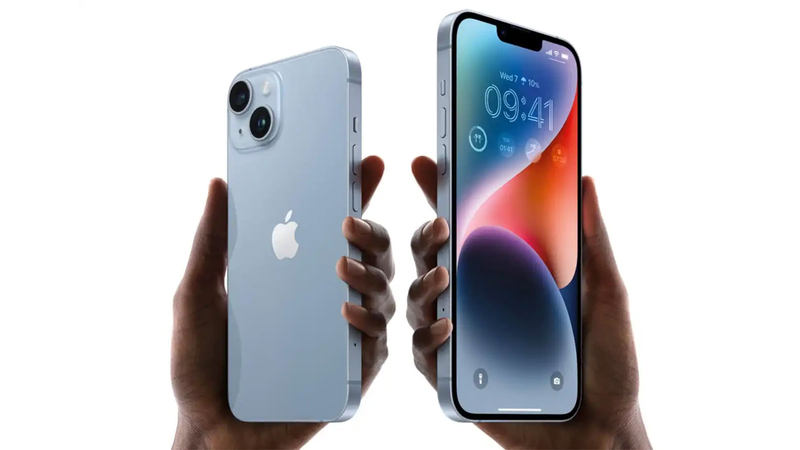
Which iPhone would be worse off if you dropped it?
Apple
Specs: Storage and processor options
In the past each year when Apple has introduced new iPhones each of the new models has featured the same processor, or at least a variant of the same processor. 2022 was different though. The iPhone 14 Pro and Pro Max both feature the new A16 chip, while the iPhone 14 and 14 Plus will feature the A15 chip found in the 2021 iPhone 13 Pro and Pro Max.
The iPhone 13 and the iPhone SE 3 also offer the A15 chip, but this version of the chip has a 4 core GPU, while the version in the iPhone 14 and 14 Plus has a 5 core GPU. This extra GPU core will be beneficial if you play games or use other graphics intensive apps. Apple’s decision to reserve the new chip for the top-of-the-range phones does make the iPhone 14 will less attractive than it would otherwise have been, but there is an argument that we don’t really need new chips every year, especially since Apple’s processors are so far ahead of the competition. It does mean that if you are choosing between the iPhone 13 and iPhone 14 the decision isn’t going to be dictated by how long Apple will support the chip inside the iPhone.
Not that Apple isn’t singing the praises of the A16 Bionic, which is made using a 4nm rather than 5nm process for improved performance and power efficiency. The new chip is apparently the “fastest in any smartphone”, 40 percent faster than the closest competition, 10% faster than the A15 Bionic and 20% more power efficient, according to Apple. Apple also claims 50 percent more memory bandwidth, which could be due to a shift from LPDDR4x to LPDDR5 memory.
Storage is likely to be a factor in your decision too. Only the Pro and Pro Max models offer 1TB onboard storage, but do you need that much storage? Perhaps if you are purchasing one of these models you do need that much storage – if you record, and need to have continual easy access to, large quantities of high-resolution video, this may be a boon. But for most it will be overkill.
Each iPhone is available in between three and four capacity options. It’s important to consider how much you need before buying because iPhones don’t have a microSD card slot that will allow you to add additional storage at a later date; but these days, with the minimum allocation a very respectable 64GB, this may be less of a worry. It all depends how much stuff you like to put on your device and whether you would consider paying a monthly fee for iCloud storage, which has the benefit of meaning all your data is available on any of your devices. See How much does iCloud cost for more information.
Before you decide how much storage you need have a look at your current phone’s usage (go to Settings > General > iPhone Storage) and think about how much space you really need. Read How much storage do you need on an iPhone? for more advice.
| iPhone | Processor | Storage | Battery life |
|---|---|---|---|
| iPhone 14 Pro Max | A16 Bionic chip, 6-core CPU, 5-core GPU | 128GB 256GB 512GB 1TB |
Up to 29 hours video playback, up to 50% charge in 35 minutes with 20W adapter or higher |
| iPhone 14 Pro | A16 Bionic chip, 6-core CPU, 5-core GPU | 128GB 256GB 512GB 1TB |
Up to 23 hours video playback, up to 50% charge in 35 minutes with 20W adapter or higher |
| iPhone 14 Plus | A15 Bionic chip, 6-core CPU, 5-core GPU | 128GB 256GB 512GB |
Up to 26 hours video playback, up to 50% charge in 30 minutes with 20W adapter or higher |
| iPhone 14 | A15 Bionic chip, 6-core CPU, 5-core GPU | 128GB 256GB 512GB |
Up to 20 hours video playback, up to 50% charge in 30 minutes with 20W adapter or higher |
| iPhone 13 | A15 Bionic chip, 6-core CPU, 4-core GPU | 128GB 256GB 512GB |
Up to 19 hours video playback, up to 50% charge in 30 minutes with 20W adapter or higher |
| iPhone 13 mini | A15 Bionic chip, 6-core CPU, 4-core GPU | 128GB 256GB 512GB |
17 hrs video playback, up to 50% charge in 30 minutes with 20W adapter or higher |
| iPhone 12 | A14 Bionic, 6-core CPU, 4-core GPU | 64GB 128GB 256GB |
17 hrs video playback, up to 50% charge in 30 minutes with 20W adapter or higher |
| iPhone SE 3 | A15 Bionic, 6-core CPU, 4-core GPU | 64GB 128GB 256GB |
15 hrs video playback, up to 50% charge in 30 minutes with 20W adapter or higher |
Battery life and charging
Another way that the iPhone tends to improve with every generation is battery life and the iPhone 14 series is no different. The iPhone 14 now claims up to 20 hours video playback, compared to 19 hours for the iPhone 13. The iPhone 14 Plus offers 26 hours video playback, the iPhone 14 Pro 23 hours and the iPhone 14 Pro Max up to 29 hours video playback.
The older iPhones still on sale offer less, with 17 hours offered by the iPhone 13 mini and the iPhone 12 and the iPhone SE 3 offering 15 hours video playback. In typical use though, you can expect to get more than a day of use out of all iPhones, it’s been a few years since it has been necessary to charge your iPhone every night, although you likely will maintain a habit of doing so.
Should you forget to charge your iPhone the important question is how much time would you need to plug it in for to get a reasonable amount of charge? All smaller iPhones offer “Up to 50% charge in 30 minutes with 20W adapter or higher”, while the larger models require 35 minutes to offer the same.
As for how you charge the iPhone, fast charging requires a 20W adapter or higher that plugs into the Lightening port on your iPhone. All but the iPhone SE 3 can also be charged wirelessly via MagSafe.
Battery life and charging times can be seen in the table above.
Which iPhone should I buy?
Clearly the best iPhone you can buy right now is the iPhone 14 Pro or Pro Max, depending on whether you want a large of standard screen size. There is an even bigger gap between the standard iPhone and the Pro model this year due to Apple’s decision to only add the A16 to the Pro models. However, the introduction of the iPhone 14 Plus does at least mean that those who just want a larger screen no longer need to buy the most expensive iPhone, which will be one reason why some will choose the Plus over the Pro Max.
The choice between an iPhone 13 and iPhone 14 will depend on how much the camera improvements and the extra hour of battery life in the newer iPhone matter. There’s also the new safety features, but we don’t think people will be buying new iPhones just because of these features.
It’s now two years since the introduction of the iPhone 12, which is a good reason to avoid it, but it actually offers a lot of things that the iPhone SE 3 lacks, despite the iPhone SE 3 being a newer iPhone. So it’s still worth considering the iPhone 12 if you are looking for a cheaper iPhone. The iPhone 13 mini is the best choice if you want a small iPhone, the only reason to choose the iPhone SE 3 over the 13 mini is if you really don’t feel comfortable about leaving the Home button behind. For some people the Home button is still essential, but its days are probably numbered and this is likely to be the last iPhone which offers the feature.
One thing more to note is that where prices for the iPhone 14 generation didn’t rise compared to the previous generation in the US, they did elsewhere, so if you are upgrading expect to pay more than you would have, hence if you live outside the US the top of the range iPhones cost more than ever this year and we’d recommend looking for the iPhone 13 Pro and Pro Max because if you can find these still on sale they are likely to represent a good deal in comparison.
Once you have chosen your new iPhone be sure to read our iPhone set up guide.
iPhone 14 Pro Max
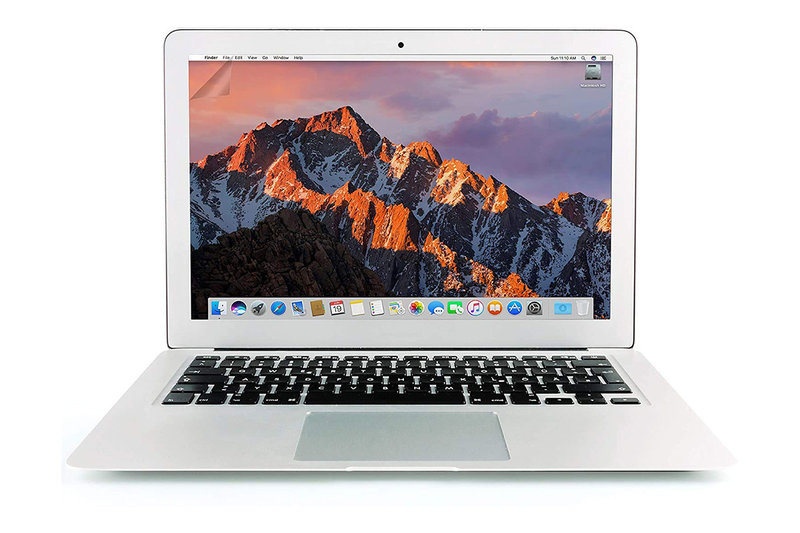
iPhone 14 Pro Max in Deep Purple
Simon Lohmann
Price: From $1,099/£1,119
Buy from Apple
iPhone 14 Pro Max deals
Monitor the lowest prices in your area:
Retailer
Price

$1099.99
Price comparison from over 24,000 stores worldwide
iPhone 14 Pro
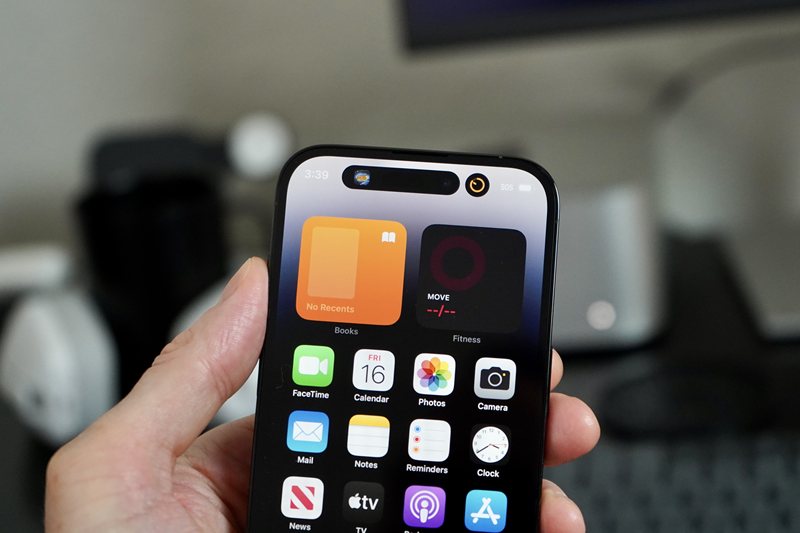
The iPhone 14 Pro (like the Max) features the Dynamic Island.
Foundry
Price: From $999/£1,099
Buy from Apple
iPhone 14 Pro deals
Monitor the lowest prices in your area:
Retailer
Price

$999.99
Price comparison from over 24,000 stores worldwide
iPhone 14 Plus
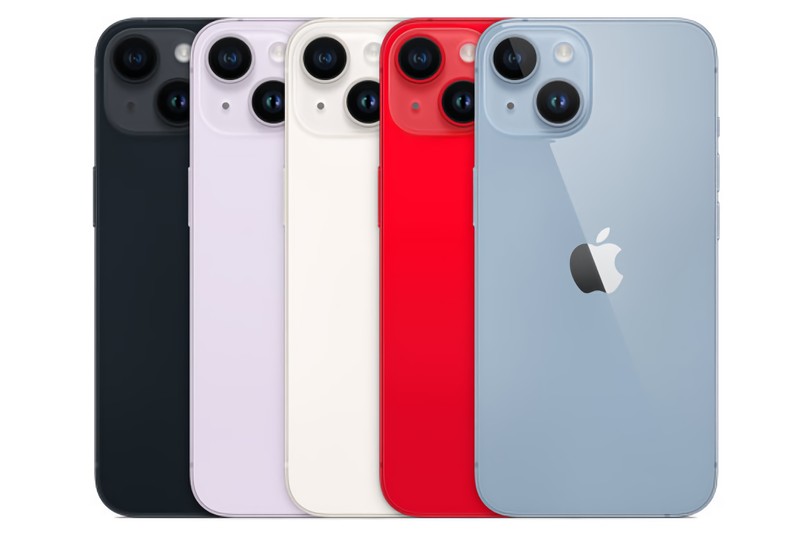
The iPhone 14 Plus looks the same as the iPhone 14 (but it’s bigger!)
Apple
Price: From $899/£949
Buy from Apple
iPhone 14 Plus deals
Monitor the lowest prices in your area:
Retailer
Price

$899.00

$899.99
Price comparison from over 24,000 stores worldwide
iPhone 14
Price: From $799/£849
Buy from Apple
iPhone 14 deals
Monitor the lowest prices in your area:
Retailer
Price

$799.00

$799.99
Price comparison from over 24,000 stores worldwide
iPhone 13 Pro Max

No longer sold by Apple, but you may still find it on sale. Price was from $1,099/£1,049.
iPhone 13 Pro Max deals
Check out the lowest prices in your area:
Retailer
Price

$687.00
Price comparison from over 24,000 stores worldwide
iPhone 13 Pro

No longer sold by Apple, but you may still find it on sale. Price was from $999/£949.
iPhone 13 Pro deals
Our automated table finds the best prices in your region.
Retailer
Price

$999.00
Price comparison from over 24,000 stores worldwide
iPhone 13
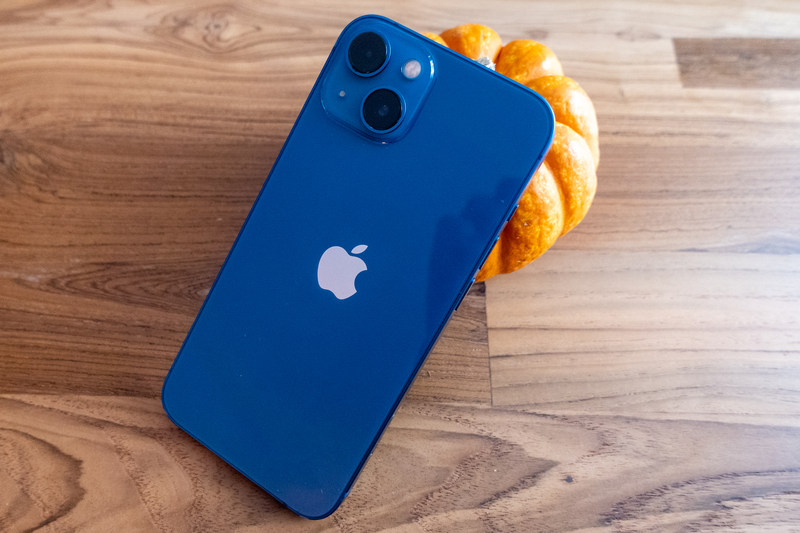
Michael Simon/IDG
Price: Was from $799/£779, now from $699/£749
Buy from Apple
iPhone 13 deals
Monitor the lowest prices in your area:
Retailer
Price

$829.00

$829.00
Price comparison from over 24,000 stores worldwide
iPhone 13 mini
Find out how the iPhone 12 compares to the iPhone 13 mini – both of which start at the same price of $599/£649.

Dominik Tomaszewski
Price: Was from $699/£679, now from $599/£649
Buy from Apple
iPhone 13 mini deals
Find the best place to buy the 13 mini with our automated price table:
Retailer
Price

$719.99
Price comparison from over 24,000 stores worldwide
iPhone 12

Price: Was from $699/£679, now from $599/£649
Buy from Apple
iPhone 12 deals
You can monitor the best prices on the iPhone 12 in our automated price table:
Retailer
Price

$629.00

$629.99
Price comparison from over 24,000 stores worldwide
iPhone 12 mini

No longer sold by Apple, but you may still find it on sale. Price was from $599/£579
iPhone 12 mini deals
Keep an eye on the lowest iPhone 12 mini prices with the help of our automated price table:
Retailer
Price

$603.25
Price comparison from over 24,000 stores worldwide
iPhone 11

No longer sold by Apple, but you may still find it on sale. Price was from $499/£489
iPhone 11 deals
iPhone SE 3(2022)
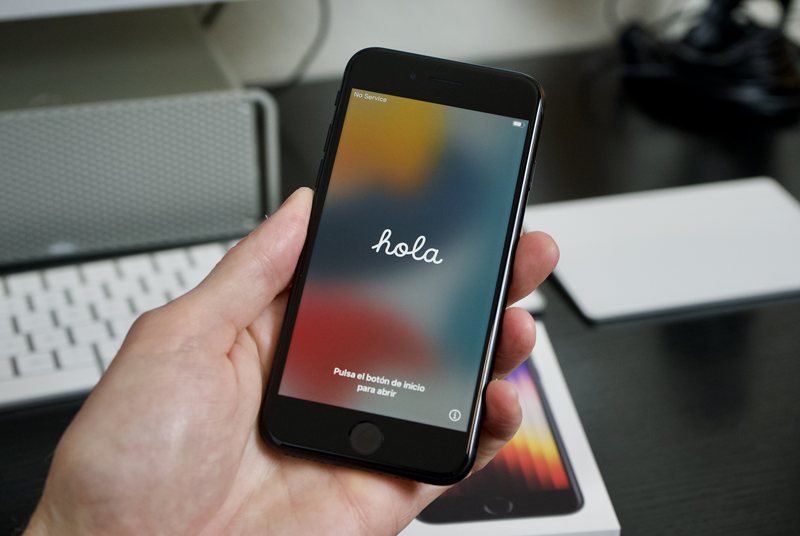
IDG
Price: Was from $429/£419, now $429/£449
Buy from Apple
iPhone SE deals
Retailer
Price

$429.00

$429.00

$429.99
Price comparison from over 24,000 stores worldwide
Buying an iPhone on contract
The two most common ways to buy an iPhone are SIM-free from Apple itself or a third-party reseller (which is where the pricing information throughout this information fits in, because you’ll be paying upfront for the phone, you will own it, and you will then need to pay for a SIM-only contract for minutes, texts and data), or buying an iPhone on contract.
A contract usually starts with an upfront payment that will vary depending on the iPhone model you go for and also how much you’ll be paying each month. That upfront payment is followed by monthly payments, normally for a total of 24 months, after which you own the phone (in most cases). Those monthly payments also cover data, minutes and texts.
The following networks are worth checking for their contract offers:
UK readers can find iPhone contracts from the following networks:
And from the following third-party resellers:
The iPhone Upgrade Programme
Apple offers a scheme called the iPhone Upgrade Programme, which works with your carrier and starts at $35.33 per month. You can then upgrade to the new iPhone each time one is announced, staying on the same or a very similar plan.
You should be cautious about the value this offers, but in some circumstances it may be the right approach for you.
The scheme works slightly differently in the UK, where you make an upfront payment of £69 followed by regular monthly payments of between £38 and £64. It’s also important to note that this is for a SIM-free iPhone. You will then need to get a SIM-only contract for your data, minutes and texts.
You do get AppleCare+ included in the Upgrade Programme, though, which is a two-year insurance for your iPhone that will cover you for two incidents of accidental damage. You’ll still have to pay an excess fee should you need to use it, but it’ll be much cheaper than having to cough up the full price of a repair.
You can find out more about the iPhone Upgrade Programme on Apple’s website.
Second-hand iPhones
You’ll have noticed that buying an iPhone doesn’t come cheap. However, if you’re strapped for cash you don’t have to dismiss the idea of buying an iPhone completely. You may be able to get a good deal on one of the older handsets if someone is looking to sell their current handset. Here’s how to buy a second-hand iPhone.
Bear in mind that if you want to run iOS 15 (the current version of Apple’s mobile operating system, although that will change this fall) you’ll need an iPhone 6s or later; the same was true of the two previous versions, iOS 13 and iOS 14. iPhones reaching back to the iPhone 5s can run iOS 12, but that really is quite an old operating system to be running and some features such as AR won’t work properly on older models anyway.
